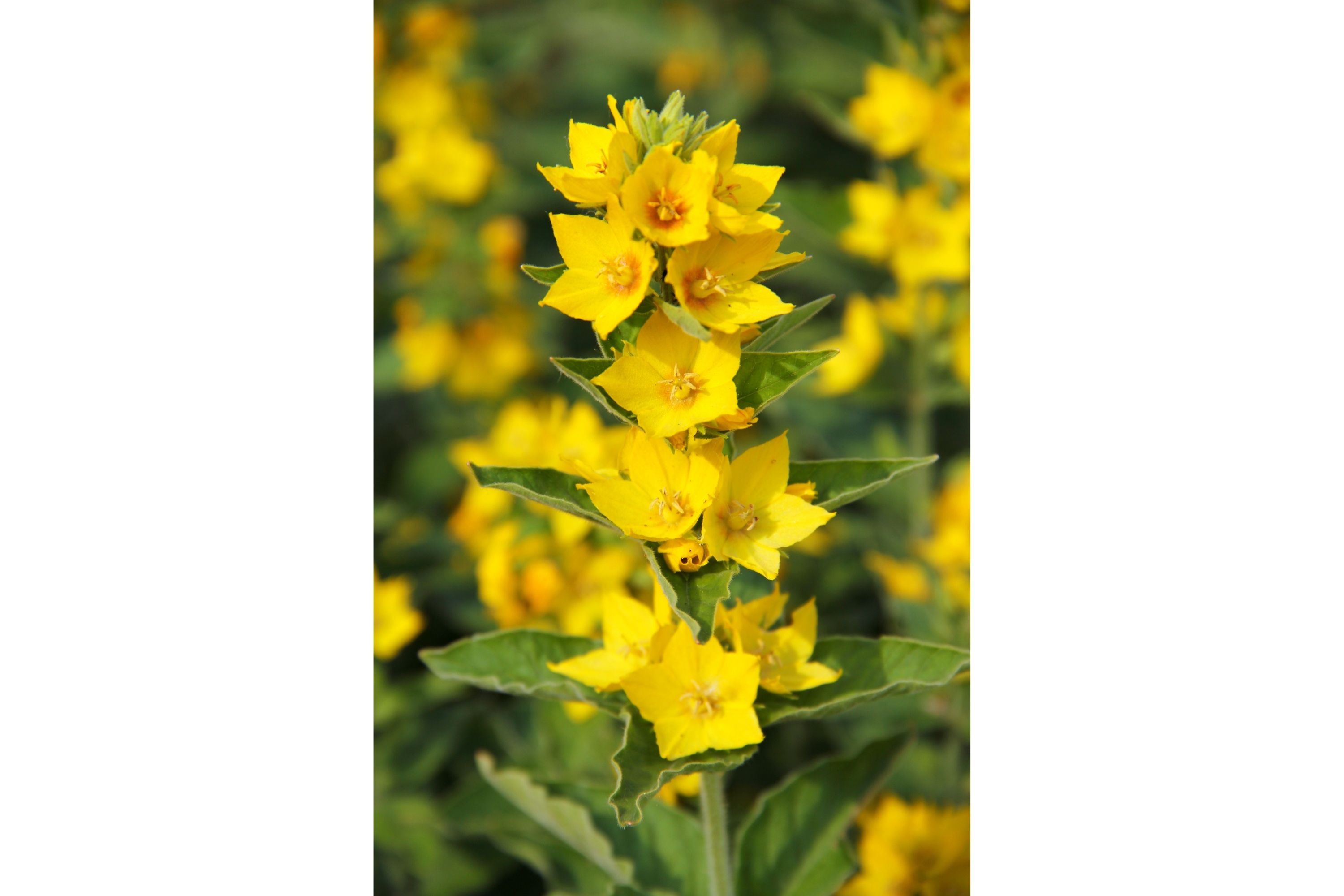Dotted loosestrife
(Lysimachia punctata)

Description
Lysimachia punctata, commonly known as Yellow Loosestrife or Dotted Loosestrife, is a perennial herbaceous plant belonging to the family Primulaceae. Native to Europe, it has been widely introduced and naturalized in North America and other parts of the world. Description: Yellow Loosestrife is a herbaceous plant that grows up to 3 feet (1 m) tall and 1 foot (0.3 m) wide. It has a clumping, upright growth habit, with multiple stems emerging from a central crown. The stems are erect, square-shaped, and covered with short, stiff hairs. The leaves are arranged in opposite pairs along the stem and are lance-shaped, with a pointed tip and a smooth, glossy surface. The leaves are up to 4 inches (10 cm) long and 1 inch (2.5 cm) wide. Yellow Loosestrife produces numerous yellow flowers in the summer, from June to September, on slender spikes that rise above the foliage. The flowers are cup-shaped, with five petals, and are approximately 1 inch (2.5 cm) wide. The petals are arranged in a star shape, and the center of the flower is filled with bright yellow stamens. The flowers are fragrant and attract bees, butterflies, and other pollinators. Habitat and Range: Yellow Loosestrife is native to Europe and western Asia, where it grows in damp meadows, marshes, and along riverbanks. It has been introduced to North America and other parts of the world as an ornamental plant, and it has naturalized in wetlands, swamps, and along waterways. Yellow Loosestrife is considered an invasive species in some areas, such as the northeastern United States, where it can outcompete native plants and disrupt natural ecosystems. Cultivation and Uses: Yellow Loosestrife is a hardy and easy-to-grow plant that is suitable for a variety of garden settings. It prefers moist, well-drained soil and full sun to partial shade. It can tolerate some drought but will perform best with regular watering. Yellow Loosestrife is often used in cottage gardens, border plantings, and wildflower meadows. It combines well with other sun-loving perennials, such as Echinacea, Rudbeckia, and Coreopsis. It is also a good choice for rain gardens and water features, where its natural ability to grow in damp soil is an asset. Yellow Loosestrife has been used for centuries in traditional herbal medicine as a remedy for a variety of ailments, including diarrhea, wounds, and fevers. However, its use is not recommended without consulting a qualified healthcare practitioner. Conclusion: Lysimachia punctata, or Yellow Loosestrife, is a beautiful and versatile plant that can add color and interest to a variety of garden settings. While it is a popular ornamental plant, it can also be invasive in some areas, so care should be taken when planting it near natural habitats. With its attractive flowers and foliage, easy care, and adaptability to different growing conditions, Yellow Loosestrife is a plant that deserves a place in any garden.
Taxonomic tree:







